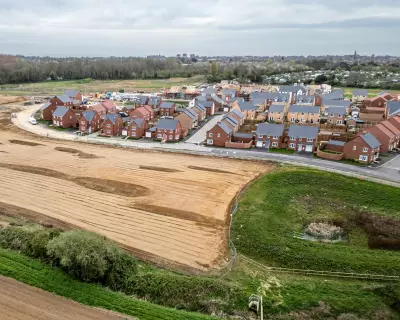
Walking through the streets surrounding Heathrow Airport reveals a disturbing parallel reality to the polished image of Britain's premier international gateway. Behind the veneer of global travel lies an escalating environmental crisis that local residents say is spiralling out of control.
The shocking reality of Heathrow's backyard
Our investigation uncovered streets littered with everything from discarded refrigerators and soiled nappies to car parts and construction waste. These aren't isolated incidents but systematic fly-tipping operations that have transformed residential areas into unofficial landfill sites.
The scale of the problem is staggering, with multiple hotspots identified where waste accumulates faster than authorities can clear it. Local residents describe waking up to new piles of rubbish almost daily, creating both environmental hazards and visual blight in their communities.
What we found on the ground
- Abandoned white goods including fridges and washing machines
- Construction debris and building materials
- Household waste including used nappies and food packaging
- Automobile parts and tyres
- Bulky furniture and mattresses
Why Heathrow's surroundings are targeted
The areas around Britain's busiest airport present the perfect storm for fly-tippers. Industrial estates, quiet access roads, and transitional zones between commercial and residential areas provide both opportunity and anonymity for those looking to dump waste illegally.
"They know these areas aren't as heavily monitored," one frustrated local business owner told us. "It's become a free-for-all, and we're left dealing with the consequences."
The environmental impact
Beyond the obvious visual pollution, this illegal dumping poses serious environmental threats. Hazardous materials can leach into soil and waterways, while discarded electrical items may contain harmful chemicals. The situation represents a significant challenge for waste management authorities already operating under budget constraints.
Local response and calls for action
Community members are demanding tougher enforcement and more frequent waste collection services. Many feel the problem has been overlooked because it affects peripheral areas rather than central tourist zones.
Residents are particularly concerned about the impact on property values and quality of life. The persistent presence of fly-tipped waste creates an atmosphere of neglect that undermines community pride and attracts further anti-social behaviour.
What happens next?
Local authorities acknowledge the severity of the situation and have pledged increased surveillance and quicker response times for reported incidents. However, with budget limitations and the sheer scale of the problem, many wonder if these measures will be enough to stem the tide of illegal dumping.
The fight against fly-tipping around Heathrow has become symbolic of broader waste management challenges facing urban areas across the UK. As one local resident poignantly asked: "If we can't keep the area around our busiest airport clean, what does that say about our commitment to environmental standards nationwide?"





